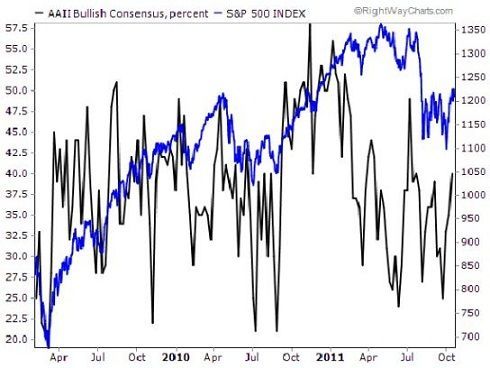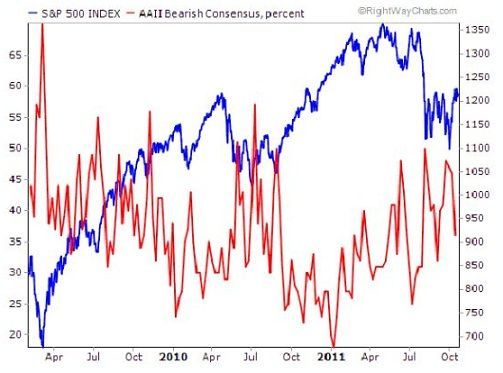Article
CEOs Are Gloomy, So Buy Their Stocks
Author(s):
Last week the Business Council revealed that CEOs are the most pessimistic they've been in two and a half years. The good news is that the last time they were so pessimistic was just before the market bottomed and went on to double.
This article published with permission from InvestmentU.com.
Last week, The Business Council released results from a survey of chief executive officers. The big cheeses revealed that they’re the most pessimistic they’ve been in two and a half years.
A
lmost 60% of the respondents said business conditions in their industries were deteriorating. That compares with the 12.5% who indicated things were getting better. In the last survey, which was conducted in May, only 8.5% of CEOs were pessimistic.
The Business Council is an independent group of 150 CEOs who consult with high-level government officials, including the president. Its members are a list of household-name CEOs. Among the group’s Executive Committee are J.P. Morgan Chase’s (NYSE: JPM) Jamie Dimon, Founding Partner of Kohlberg Kravis Roberts & Co. Henry Kravis, American Express’ (NYSE: AXP) Kenneth Chenault and Amazon.com’s (Nasdaq: AMZN) Jeffrey Bezos.
Interesting to note that the last time The Business Council was this pessimistic was in February 2009, in the throes of the recession. The stock market bottomed on March 2, 2009 and went on to double in a little over two years.
Although the majority of the CEOs surveyed are pessimistic, neither Dimon nor any of the other CEOs mentioned above have sold any stock since January.
But CEOs aren’t the only ones who get bearish at the wrong time.
Individual investors have a habit of panicking and dumping stock right before things get good again.
The two charts below pit the American Association of Individual Investors bullish consensus and bearish consensus against the S&P 500. It represents a survey of individual investors who say they’re bullish and those who say they’re bearish.

You can see that the percentage of investors who say they’re bullish tops right around market tops and bottoms right along with market bottoms. So they’re bullish when they should be selling and not bullish when they should be buying.

The inverse is true for those saying they’re bearish. The percentage of respondents who say they’re bearish peaks at market bottoms and bottoms at market tops. They’re selling at the lows and not selling at the highs.
This isn’t a new phenomenon, either. Whether we’re talking CEOs, investors or even newsletter writers, when the group starts leaning heavily in one direction, that’s usually the time to go the opposite way.
The Investor Intelligence survey, which polls financial newsletter writers, was 41% bearish versus 35.8% bullish last week.
How to beat the bears
Bears are typically defeated as the market goes higher, which is what these sentiment indicators are telling me. With CEOs and newsletter writers particularly bearish, it seems like there could be a lot of room to move higher in the fourth quarter.
One fund manager I spoke with said, “Don’t be surprised to see a market melt up into the end of the year.”
Now, you know we don’t try to time the market at Investment U. But I’m emboldened when I see the sentiment indicators nearing bearish extremes.
I’ve been advocating loading up on quality dividend paying companies as a way of handling market volatility and participating in any upside. And I stand by that strategy today.
To get some ideas, you can examine The Business Council’s roster of members and look at the stocks of the firms who offer strong yields.
Warren Buffett said it best. “Be greedy when others are fearful. Be fearful when others are greedy.”
Right now, the various surveys are telling us that others are fearful.
Marc Lichtenfeld is the Senior Analyst at InvestmentU.com. See more articles by Marc here.




